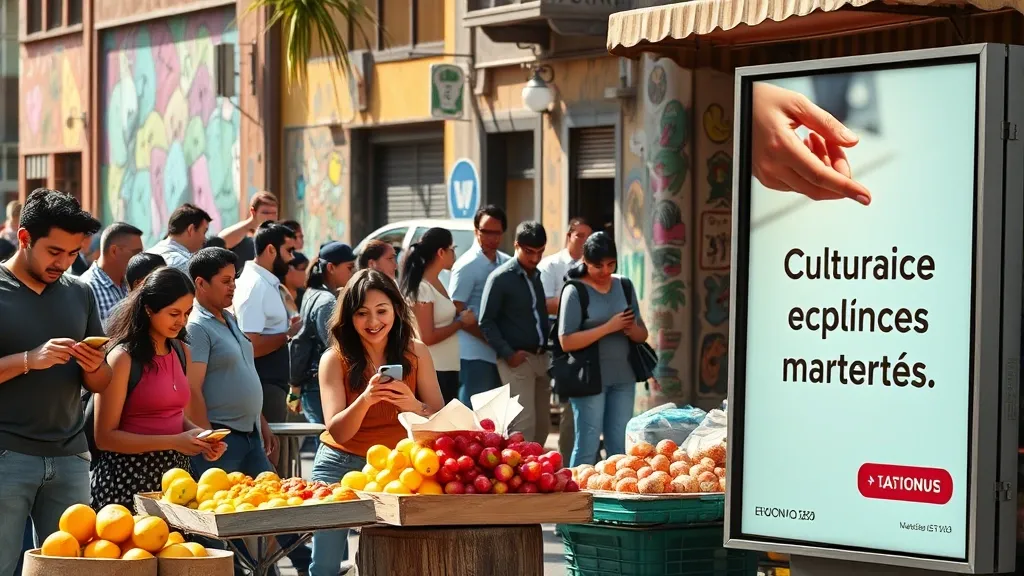The Nueva Frontera: Why Spanish-Speaking Audiences Can No Longer Be Ignored
Alright, let’s get real for a second. If you’re in the digital marketing game and you’re not paying attention to Spanish-speaking audiences, you’re kinda missing the boat. Seriously, it’s like going to a taco stand and just ordering a plain hot dog. What’s the point, right?
First off, the numbers are staggering. The Spanish-speaking population is growing faster than my collection of random memes. In the U.S. alone, there are over 41 million people who speak Spanish at home. That’s a massive audience just waiting to engage, connect, and buy stuff. If your brand hasn’t jumped on this train yet, it’s time to hop on before it leaves the station.
But it’s not just about the numbers. Spanish-speaking audiences are super diverse, with unique cultures and preferences that can really spice up your marketing strategy. You can’t just slap a “Hola” on your website and call it a day—nope, you gotta dig deeper. Think about tailoring your content and messaging to reflect local customs and interests. It’s like cooking: use fresh ingredients that resonate with your audience. Otherwise, they’ll just roll their eyes and scroll on by.
- Personalize your content: People love feeling seen and heard.
- Use local slang: It’s a great way to build rapport.
- Engage on social media: Platforms like TikTok and Instagram are gold mines for reaching this audience.
Oh, and let’s not forget about the spending power. Spanish-speaking consumers have a whopping buying power that’s hard to ignore. They’re not just looking for products; they’re looking for experiences that resonate with their identity. So, make your marketing relatable! Showcase real stories, real people, and real connections. It’s all about authenticity—something we could all use a bit more of in this world.
In conclusion, if you want your digital marketing to thrive, you simply can’t overlook the Spanish-speaking audience. It’s not just a trend; it’s a new frontier. Dive in, explore, and remember to keep it real. After all, who doesn’t love a good taco?
Cultural Nuances: The Secret Sauce of Tailored Content
Alright, let’s talk about something super crucial when it comes to digital marketing in Spanish: cultural nuances. It’s like that secret ingredient in grandma’s recipe that makes her lasagna taste way better than anyone else’s. You can have all the right ingredients, but if you don’t get the culture right, it’s just not gonna hit the mark.
First off, Spanish isn’t just one language. It’s more like a vibrant tapestry of dialects, slang, and regional quirks. Think about it—Spanish spoken in Mexico can sound totally different from what you hear in Spain or Argentina. And don’t even get me started on how the same word can mean two totally different things in different countries. One minute, you’re talking about a “pato” (duck) and the next, you could be in a whole different conversation about something else entirely if you’re not careful!
- Local References: When crafting content, using local references can make a huge difference. Talking about a popular TV show or a local dish? That’s gold. It shows you get them, you understand their world.
- Humor: Humor is a tricky one, but if you nail it, you’re golden. Just like in English, what’s funny in one culture might fall flat in another. So, tread carefully, my friend!
- Visuals: Images can say a thousand words, but make sure they resonate culturally. A picture that works in one country might be completely off the mark in another.
Now, I know what you’re thinking—“How do I even begin to grasp all this?” Honestly, it’s not rocket science, but it does take a little extra effort. You might want to dive into some local media, chat with native speakers, or even just spend some time on social media platforms popular in those regions. You’ll be surprised how much you can learn just by scrolling through feeds.
In the end, understanding these cultural nuances can be the difference between a campaign that flops and one that soars. So, if you want to unlock the power of digital marketing in Spanish, remember: it’s not just about translating words. It’s about translating culture. And who knows, maybe you’ll even pick up some awesome Spanish slang along the way. ¡Ánimo!
Tactics That Spark Engagement: From Social Media to SEO
Alright, let’s dive into the fun part—how to actually get people engaged with your content. Whether it’s on social media or through SEO, there’s a whole world of tactics that can light a fire under your audience. And trust me, once you find what grabs their attention, it’s like finding the secret sauce to your favorite recipe. Yum!
First off, let’s chat about social media. It’s like the cool hangout spot where everyone is just vibing, sharing memes, and posting cute dog pics. But seriously, platforms like Instagram, Facebook, and Twitter are goldmines for engagement. Here are a few quick tips:
- Be Authentic: People can sniff out inauthenticity from a mile away. Show your true colors, share behind-the-scenes moments, and let your audience see the real you.
- Use Visuals: A picture’s worth a thousand words, right? Well, a good video can be worth even more. So, throw in some eye-catching visuals or quick clips to grab attention.
- Ask Questions: Get your audience talking! Ask for their opinions, thoughts, or even their favorite tacos. (Who doesn’t love talking about tacos?)
Now, moving on to SEO—it’s a bit more like the quiet, mysterious cousin at the family reunion. You might not notice them at first, but they’ve got some serious power! The key here is to make sure your content is easily found by folks who are searching for what you offer. Here’s how to do it:
- Keyword Research: Find out what your audience is actually searching for. Use tools like Google Keyword Planner or Ubersuggest to discover those golden keywords.
- Quality Content: This one’s a no-brainer. If your content’s valuable, people will stick around. Write articles that answer questions or solve problems—preferably while being a little entertaining.
- Optimize Your Site: Make sure your website’s easy to navigate. Nobody wants to feel like they’re on a scavenger hunt just to find your contact info. Keep it simple!
So, there you have it! Whether you’re crafting a witty Instagram post or optimizing your latest blog for search engines, the goal is to connect with your audience. Experiment, have fun, and don’t be afraid to show a little personality. After all, who wants to engage with a robot? Not me!
Measuring Success in a Bilingual World: Metrics that Matter
So, you’ve jumped into the world of bilingual digital marketing—awesome! But how do you know if what you’re doing is actually working? Metrics, my friend. They’re like the scorecards of your marketing game. You wouldn’t play a sport without keeping track of the score, right? Same goes for digital marketing.
First off, let’s talk about traffic. Are you seeing more visitors on your site from Spanish-speaking countries? Google Analytics is your best bud here. You can look at user demographics and see where your traffic is coming from. If you notice a spike from Mexico or Spain, that’s a solid sign your Spanish content is hitting home. But remember, just because people are visiting doesn’t mean they’re sticking around. That leads us to the next point: engagement.
Engagement metrics like time on page and bounce rate can tell you a lot. If folks are clicking on your Spanish blog but leaving right away, you might wanna rethink your content strategy. Maybe it’s too formal, or maybe they just didn’t find what they were looking for. Keep it relatable! I mean, who wants to read a textbook, right?
- Social Media Interaction: Are your Spanish posts getting likes, shares, or comments? This is a huge indicator of how well you’re connecting with your audience. If they’re engaging with your posts, you’re on the right track.
- Conversion Rates: Ultimately, the goal is to turn those visitors into customers. Check how many people are filling out forms or making purchases after reading your Spanish content. If your conversion rates are low, that’s a clear signal to tweak your approach.
- Customer Feedback: Don’t underestimate the power of feedback. Surveys or simple polls can give you insight into what your audience thinks about your bilingual offerings. Plus, they might throw in a joke or two—always a bonus!
Lastly, keep an eye on your SEO metrics. Keywords in Spanish might be different from English ones, so track how well you’re ranking for those terms. If you’re not showing up on the first page, it’s time to roll up your sleeves and do some keyword research.
In a nutshell, measuring success in a bilingual world isn’t just about numbers. It’s about understanding your audience and adapting to their needs. So, get those metrics rolling, and don’t be afraid to pivot when necessary. After all, marketing is a journey, not a destination!

